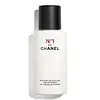What's inside
What's inside
 Key Ingredients
Key Ingredients

No key ingredients
 Benefits
Benefits

 Concerns
Concerns

 Ingredients Side-by-side
Ingredients Side-by-side

Water
Skin ConditioningGlycerin
HumectantPotassium Palmitate
EmulsifyingSodium Stearate
CleansingPalmitic Acid
EmollientSodium Methyl Cocoyl Taurate
CleansingPotassium Laurate
EmulsifyingPolyethylene
AbrasivePotassium Stearate
CleansingLauric Acid
CleansingPotassium Myristate
EmulsifyingStearic Acid
CleansingMyristic Acid
CleansingPEG-3 Distearate
EmulsifyingGlycyrrhiza Glabra Root Extract
BleachingHydrolyzed Conchiolin Protein
Skin ConditioningSodium Laureth Sulfate
CleansingSodium Lauroyl Lactylate
EmulsifyingCaprylic/Capric Triglyceride
MaskingPotassium Sorbate
PreservativeButylene Glycol
HumectantLauryl Glucoside
CleansingSodium Cocoyl Isethionate
CleansingParfum
MaskingPolyquaternium-7
Tetrasodium EDTA
Benzoic Acid
MaskingSodium Benzoate
MaskingWater, Glycerin, Potassium Palmitate, Sodium Stearate, Palmitic Acid, Sodium Methyl Cocoyl Taurate, Potassium Laurate, Polyethylene, Potassium Stearate, Lauric Acid, Potassium Myristate, Stearic Acid, Myristic Acid, PEG-3 Distearate, Glycyrrhiza Glabra Root Extract, Hydrolyzed Conchiolin Protein, Sodium Laureth Sulfate, Sodium Lauroyl Lactylate, Caprylic/Capric Triglyceride, Potassium Sorbate, Butylene Glycol, Lauryl Glucoside, Sodium Cocoyl Isethionate, Parfum, Polyquaternium-7, Tetrasodium EDTA, Benzoic Acid, Sodium Benzoate
 Reviews
Reviews

Ingredients Explained
These ingredients are found in both products.
Ingredients higher up in an ingredient list are typically present in a larger amount.
Parfum is a catch-all term for an ingredient or more that is used to give a scent to products.
Also called "fragrance", this ingredient can be a blend of hundreds of chemicals or plant oils. This means every product with "fragrance" or "parfum" in the ingredients list is a different mixture.
For instance, Habanolide is a proprietary trade name for a specific aroma chemical. When used as a fragrance ingredient in cosmetics, most aroma chemicals fall under the broad labeling category of “FRAGRANCE” or “PARFUM” according to EU and US regulations.
The term 'parfum' or 'fragrance' is not regulated in many countries. In many cases, it is up to the brand to define this term.
For instance, many brands choose to label themselves as "fragrance-free" because they are not using synthetic fragrances. However, their products may still contain ingredients such as essential oils that are considered a fragrance by INCI standards.
One example is Calendula flower extract. Calendula is an essential oil that still imparts a scent or 'fragrance'.
Depending on the blend, the ingredients in the mixture can cause allergies and sensitivities on the skin. Some ingredients that are known EU allergens include linalool and citronellol.
Parfum can also be used to mask or cover an unpleasant scent.
The bottom line is: not all fragrances/parfum/ingredients are created equally. If you are worried about fragrances, we recommend taking a closer look at an ingredient. And of course, we always recommend speaking with a professional.
Learn more about ParfumPotassium Sorbate is a preservative used to prevent yeast and mold in products. It is commonly found in both cosmetic and food products.
This ingredient comes from potassium salt derived from sorbic acid. Sorbic acid is a natural antibiotic and effective against fungus.
Both potassium sorbate and sorbic acid can be found in baked goods, cheeses, dried meats, dried fruit, ice cream, pickles, wine, yogurt, and more.
You'll often find this ingredient used with other preservatives.
Learn more about Potassium SorbateWater. It's the most common cosmetic ingredient of all. You'll usually see it at the top of ingredient lists, meaning that it makes up the largest part of the product.
So why is it so popular? Water most often acts as a solvent - this means that it helps dissolve other ingredients into the formulation.
You'll also recognize water as that liquid we all need to stay alive. If you see this, drink a glass of water. Stay hydrated!
Learn more about Water